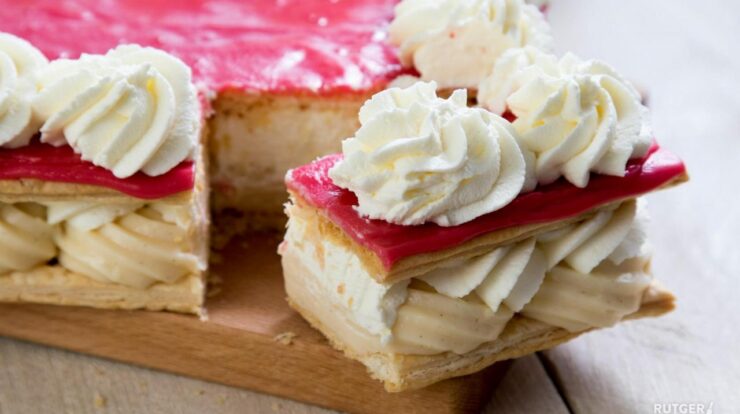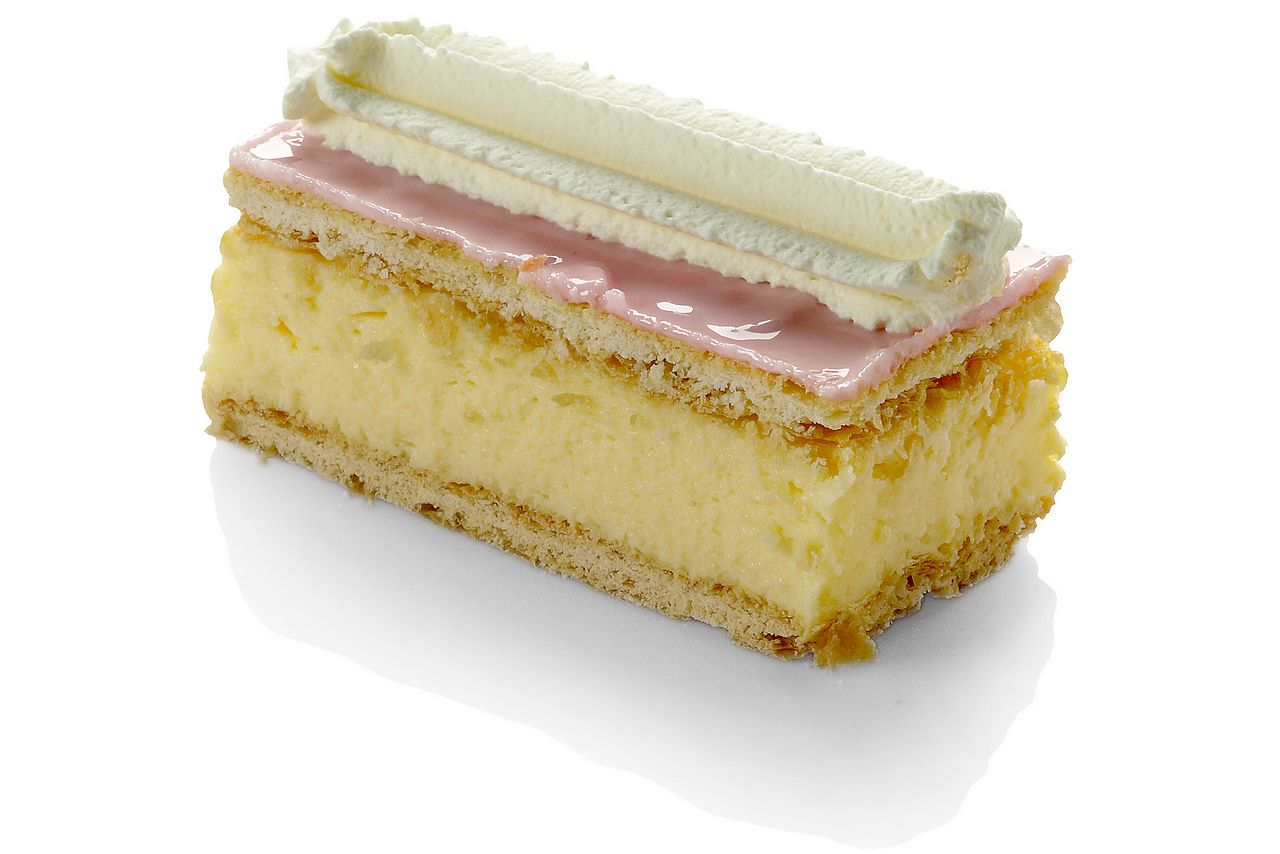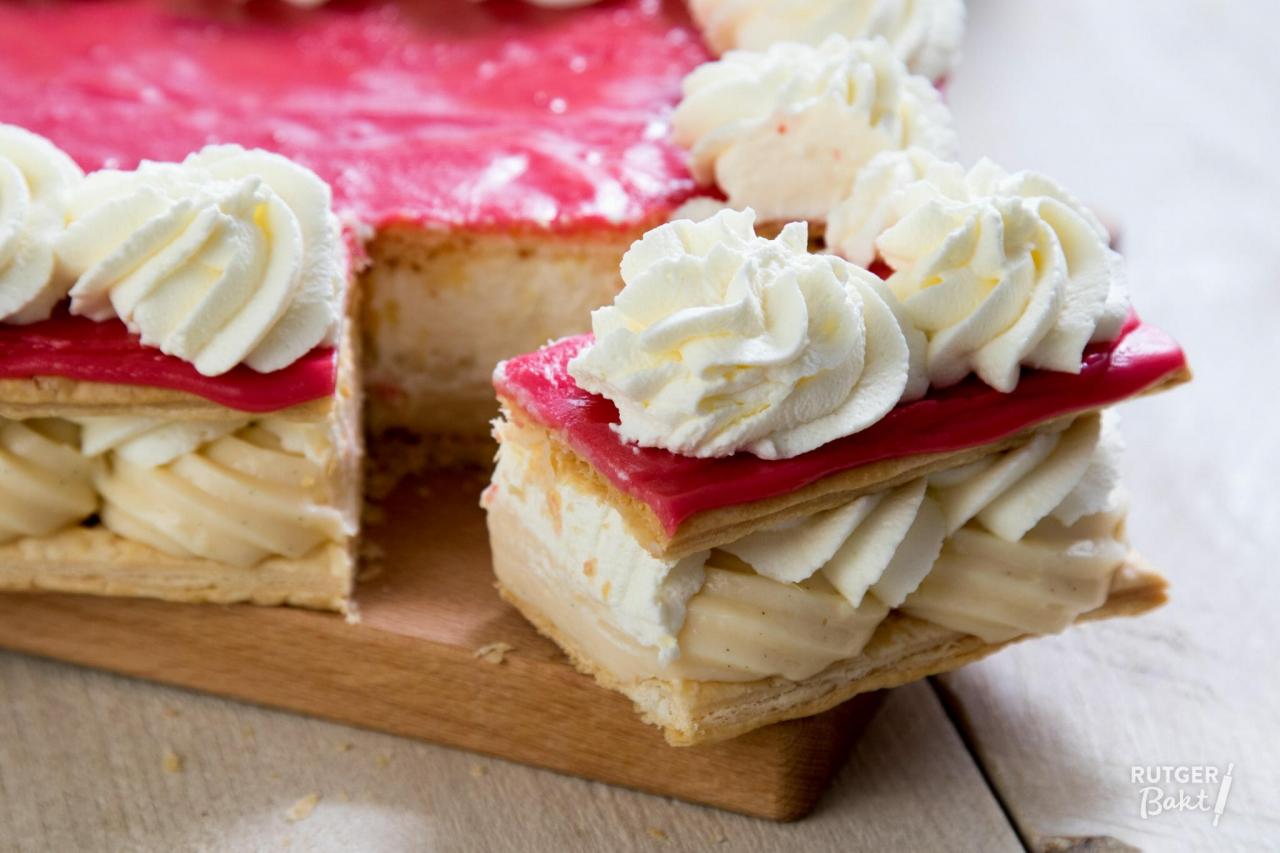
Tompouce, a delectable pastry originating from the Netherlands, has captivated taste buds around the world. Its rich history, diverse variations, and cultural significance make it a culinary masterpiece that deserves exploration.
Composed of flaky pastry, creamy filling, and a glossy glaze, tompouce has become an iconic treat enjoyed in many countries. Its origins can be traced back to the 19th century, where it gained popularity as a celebratory dessert.
Tompouce Definition
A tompouce is a traditional Dutch pastry consisting of two layers of puff pastry filled with a thick layer of custard and topped with a layer of pink fondant icing.
Tompouce History and Origin
The origins of the tompouce are unclear, but it is believed to have originated in the Netherlands in the 19th century. It is said to have been named after Admiral Cornelis Tromp, who defeated the British fleet in the Battle of Scheveningen in 1653.
Tompouce Variations

There are many variations of tompouce found around the world. In France, it is known as a mille-feuille, and in Italy, it is called a millefoglie. In some countries, it is filled with fruit or chocolate instead of custard.
| Name | Origin | Key Differences |
|---|---|---|
| Tompouce | Netherlands | Filled with custard and topped with pink fondant icing |
| Mille-feuille | France | Filled with pastry cream and topped with a layer of powdered sugar |
| Millefoglie | Italy | Filled with custard or pastry cream and topped with a layer of chocolate ganache |
Tompouce Preparation

To prepare a traditional tompouce, you will need the following ingredients:
| Ingredient | Quantity |
|---|---|
| Puff pastry | 2 sheets |
| Custard | 1 cup |
| Fondant icing | 1 cup |
- Preheat the oven to 400 degrees Fahrenheit.
- Roll out the puff pastry sheets on a lightly floured surface.
- Cut the puff pastry sheets into two rectangles.
- Place one rectangle on a baking sheet and spread the custard over it.
- Top with the other rectangle of puff pastry.
- Bake for 20 minutes, or until the puff pastry is golden brown.
- Allow the tompouce to cool completely.
- Spread the fondant icing over the top of the tompouce.
Tompouce Presentation and Serving
Tompouces are traditionally served as a dessert or snack. They can be cut into squares or triangles and served with a cup of coffee or tea.
- Garnish with fresh fruit or whipped cream.
- Drizzle with chocolate sauce or caramel.
- Serve with a scoop of ice cream or sorbet.
Tompouce Cultural Significance
Tompouces are a popular treat in the Netherlands and are often served at celebrations and parties. They are also a symbol of Dutch culture and heritage.
- Tompouces are often used as a symbol of the Netherlands in art and literature.
- The tompouce is featured on the cover of the Dutch children’s book “Pluk van de Petteflet”.
- Tompouces are often served at Dutch festivals and celebrations.
Final Conclusion

From its humble beginnings to its present-day global recognition, tompouce has left an indelible mark on the culinary landscape. Its versatility, cultural significance, and delectable taste ensure its enduring popularity for generations to come.
FAQs
What is the origin of tompouce?
Tompouce originated in the Netherlands in the 19th century.
What are the main ingredients of tompouce?
Flaky pastry, creamy filling, and a glossy glaze.
What are some popular variations of tompouce?
Variations include the Dutch tompouce, French mille-feuille, and Italian sfogliatelle.
